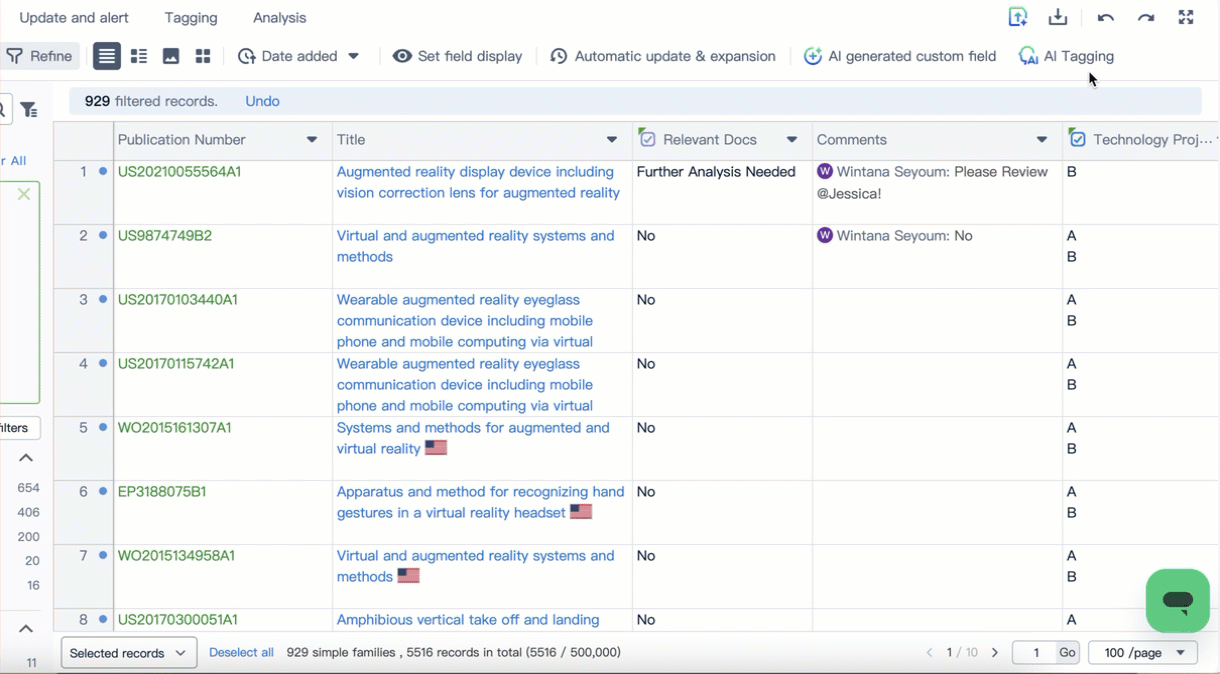Revolutionizing Patent Analytics: A New Era with Patsnap’s LLM AI Tagger

Carl Röst
Head of Consulting, Patsnap
You’ve probably heard the phrase countless times: turning patent insights into business strategy. For decades, this catchy slogan has circulated within the patent analytics industry, yet achieving this goal has remained frustratingly elusive. The tools and methods traditionally used to extract business insights from patent data have consistently fallen short, whether we’re talking about classifications, landscaping, machine learning, or manual tagging.
As Head of Consulting at Patsnap, I’ve spent considerable time reflecting on why these methods fail and what it truly takes to make patent insights actionable. Let me break it down.
The Fundamental Flaw of Patent Office Classifications
Here’s the thing about patent office classification systems like IPC or CPC: they were originally designed for legal and archival purposes, not strategic business analysis. They’re often overly broad, challenging to interpret, and rarely correlate clearly with actual products or specific business initiatives. Simply put, patent office classifications typically don’t provide practical value for generating actionable business insights. When your classification system cannot distinguish between fundamentally different applications of the same core technology, strategic analysis becomes impossible.
The Landscaping Illusion
Landscaping tools promised to simplify patent analytics, even those with sophisticated 3D visualizations. However, these tools rely on legacy data classification and clustering algorithms that were prematurely labeled as “AI”. These older methods often create connections that humans find illogical, frequently leaving users more confused than informed despite their visual appeal.
Even respected institutions like WIPO rely on legacy machine learning-based search strategies for their landscape reports, inadvertently compromising the data and significantly reducing its value for strategic business decisions. WIPO’s 2024 GenAI Patent Report demonstrates this challenge. The queries often exhibit over-recall, sweeping in broad machine learning applications like image classification, speech recognition, predictive analytics, and fraud detection, rather than focusing strictly on generative AI.
The Pitfalls of Manual Tagging
At first glance, manual tagging appears to be the ideal solution. Humans read patents and create customized taxonomies tailored precisely to their business needs. Yet this approach demands enormous human resources and considerable time, and even then, consistency remains a significant challenge.
Consider something as straightforward as distinguishing different apple varieties. This seems simple, right? But what if you have a patent describing an apple variety commonly used in both baking and eating fresh? Should it be categorized primarily under cooking apples or eating apples? Different individuals might classify it differently based on personal experiences or biases.
Here’s another relatable example: smartphone technology patents. Is a patent primarily about screen technology, battery efficiency, or camera quality, especially when it involves subtle improvements relevant to multiple categories? These nuanced distinctions create substantial challenges and inconsistencies when manually tagging patents.
Manual categorization also quickly becomes outdated. Imagine categorizing vehicles strictly as either consumer cars or taxis, only to have new categories like ride-sharing or self-driving cars emerge. Updating taxonomies to reflect such shifts can become impractical and time-consuming.
Legacy Machine Learning-based “AI-Tagging”: Not Good Enough
To address manual tagging limitations, many companies adopted legacy machine learning-based tagging solutions, such as Cipher. These solutions aimed to reduce human input but heavily depended on large volumes of manually tagged training data, making implementation lengthy and resource intensive.
Most legacy machine learning tools offer limited intelligence. They either provide too little insight to map patents effectively to specific products and business initiatives or, worse, mislead the user.
Returning to our apple example, legacy machine learning-based patent classification might easily differentiate apples from bananas but struggle significantly to distinguish between varieties of apples. Such nuanced cases aren’t minor exceptions; they represent a significant portion of patent data. The inability to handle these nuances significantly impacts the accuracy and quality of analysis.
Moreover, the rigidity of machine learning based solutions means they struggle to adapt rapidly to new market trends or emerging technologies.
Patsnap’s Revolutionary Approach: LLM-Based AI Classifier
This is precisely why Patsnap’s new large language model (LLM)-based AI classifier represents a groundbreaking advancement. Unlike legacy machine learning, Patsnap’s LLM leverages extensive general knowledge and doesn’t require exhaustive manual tagging or extensive training data. Instead, it inherently understands nuanced differences, making this the first truly AI-based software solution for patent classification.
Returning again to our apple example, Patsnap’s LLM AI tagger effortlessly understands subtle distinctions between apple varieties, in other words categorizing patents consistently and accurately. Similarly, in the smartphone example, it intuitively identifies and categorizes nuanced technical improvements across different functional areas.
How Patsnap’s LLM-Based AI Classifier Excels in Nuanced Analysis
Patsnap’s LLM AI tagger comprehensively reads and interprets patent claims, abstracts, and descriptions. It also utilizes Patsnap’s unique synthetic AI data, including AI-generated titles, problems, methods, and benefits, to enhance understanding. By combining these inputs, the LLM accurately reasons through complex scenarios.

The solution is highly intuitive and adaptable. Users can easily define categories, guide the LLM’s interpretation, and rapidly adjust classifications to align with evolving market conditions or competitor analyses. This transparent, user-friendly approach ensures consistent accuracy and practical usability for real-world business needs.
Scalable and Cost-Effective Implementation
Scalability is crucial for large enterprises analyzing extensive patent portfolios. Using external APIs or large general-purpose AI models at this scale can be prohibitively expensive.
Patsnap addresses this issue by deploying local, domain-specific models specifically optimized for patent analysis. These targeted models efficiently handle extensive patent volumes while significantly reducing errors compared to general-purpose solutions.
The World’s First True Patent-to-Business Insight Platform
With Patsnap’s LLM AI tagger, the company has finally delivered on the longstanding promise of turning patent data into actionable, strategic insights. For the first time ever, businesses can effortlessly leverage patent analytics without the significant human resources, technical complexity, or inflexibility and inaccuracies of legacy solutions.
This isn’t incremental improvement; it’s a revolutionary leap forward in patent analytics. Patsnap now makes patent analysis so quick, intuitive, and accessible that anyone can easily transform complex patent data into meaningful business strategies.
Don’t miss your chance to see Patsnap’s LLM tagger in action. Save your spot at our upcoming webinar.